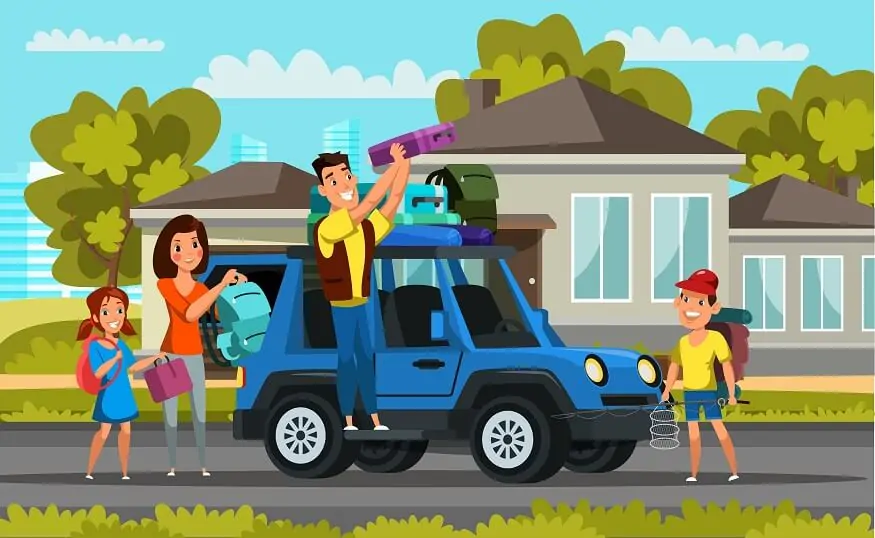Educational Family Vacations: Making Learning Fun on the Road.
Educational Family Vacations: Making Learning Fun on the Road.

Traveling with family offers a wonderful opportunity not only to bond and explore new places but also to turn every journey into an educational adventure. Educational family vacations blend sightseeing with meaningful learning experiences, sparking curiosity in children and adults alike. When learning is part of the fun, kids stay engaged, parents feel fulfilled, and the whole family returns with memories that go beyond photos.
In this blog, we’ll explore how to plan educational vacations that captivate children’s interests and make learning an exciting part of your travels.
Why Choose Educational Family Vacations?
Incorporating education into travel benefits families in many ways:
- Enhances Learning Outside the Classroom: Kids encounter real-world history, science, and culture firsthand.
- Promotes Critical Thinking and Curiosity: Exploring new environments encourages questions and discovery.
- Creates Lasting Memories: Experiences that involve active learning tend to be remembered better.
- Strengthens Family Bonds: Shared discovery builds conversations and connections.
- Encourages Cultural Awareness: Immersion in diverse customs and languages broadens perspectives.
Rather than seeing travel as just a break from school, educational trips add value by expanding your children’s worldview.
Planning Your Educational Family Vacation
1. Choose Destinations with Rich Learning Opportunities
Some places naturally lend themselves to educational experiences. Consider destinations with:
- Historical Significance: Ancient ruins, battlefields, heritage sites, and museums.
- Scientific Interest: National parks, aquariums, planetariums, and science centers.
- Cultural Richness: Traditional villages, cultural festivals, local artisan workshops.
- Natural Wonders: Volcanoes, glaciers, coral reefs, and biodiversity hotspots.
Selecting locations that align with your children’s interests helps keep them motivated and excited.
2. Set Learning Goals That Match Ages and Interests
Before traveling, talk with your kids about what they want to learn. Tailor activities to their ages:
- Young children: Focus on sensory experiences and simple explanations.
- Tweens: Encourage curiosity with interactive exhibits and guided tours.
- Teens: Dive into deeper discussions, documentaries, and hands-on workshops.
Setting realistic goals makes learning achievable and enjoyable rather than overwhelming.
Making Learning Engaging During Travel
3. Use Storytelling and Role-Playing
Turn historical sites or museums into stories full of characters and drama. Encourage kids to imagine what life was like for people in different times or cultures. Role-playing as explorers, scientists, or historians can transform a visit into an interactive adventure.
4. Incorporate Games and Challenges
Create scavenger hunts at museums or parks, where kids search for specific artifacts or animals. Use quizzes, puzzles, or travel bingo to turn sightseeing into a fun competition. This keeps children actively engaged and attentive.
5. Use Technology Wisely
Leverage educational apps, audio guides, or augmented reality tools related to your destinations. Many museums and parks offer kid-friendly apps that provide interactive learning. Watching a short documentary about your destination before arrival also primes kids’ curiosity.
Learning Beyond the Attractions
6. Involve Local Communities
Meet local people, attend cultural performances, or participate in workshops to learn traditional crafts or cooking. These hands-on experiences deepen understanding and appreciation beyond surface-level tourism.
7. Keep a Travel Journal or Blog
Encourage kids to record their observations, sketches, or reflections each day. Writing or drawing about what they see and learn enhances retention and encourages thoughtful processing of new knowledge.
8. Sample Local Foods with Educational Context
Food is a delicious way to explore culture and history. Discuss ingredients, origins, and preparation methods to connect culinary experiences with local traditions.
Overcoming Challenges
Managing Energy and Attention Spans
Kids may get tired or restless during long visits. Break up activities with downtime, outdoor play, or snacks. Be flexible and ready to adjust plans if enthusiasm wanes.
Avoiding Information Overload
Focus on a few key learning points rather than overwhelming kids with facts. Use hands-on experiences and stories to make information memorable.
Balancing Education with Fun
Keep a balance between structured learning and free exploration. Remember, the goal is to foster a love of learning, not turn the vacation into a school day.
Sample Educational Family Vacation Ideas
A Historical Road Trip
Plan a route that visits significant historical landmarks, battlefields, and museums. For example, a trip along the East Coast of the U.S. can include Colonial Williamsburg, Washington D.C., and Philadelphia, offering immersive lessons in American history.
Exploring Nature and Science
Visit national parks with ranger-led programs, geology exhibits, and wildlife viewing. Yellowstone, the Grand Canyon, or the Galápagos Islands provide breathtaking natural classrooms.
Cultural Immersion Abroad
Choose a destination known for its living traditions, such as Japan’s Kyoto with tea ceremonies and calligraphy classes, or Mexico with its vibrant festivals and artisan markets.
Final Thoughts
Educational family vacations offer a powerful way to combine travel with meaningful learning. By choosing destinations that inspire curiosity, setting age-appropriate goals, and making learning interactive and fun, you can create trips that enrich your children’s understanding of the world — all while making cherished family memories.
Travel opens doors not just to new places but to new perspectives and lifelong lessons. When education and adventure go hand in hand, the journey becomes as rewarding as the destination.


